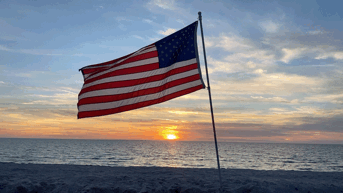The Byzantine Empire's School of Nisibis, founded in the 4th century, sometimes referred to as the world's first university, was a Christian center of scientific and medical learning, located in present-day Turkey.
- hospital,
- hospitality,
- host,
- hostel, and
- hotel.
- Bologna
- Paris
- Naples
- Toulouse
- Oxford
- Daughters of Charity of Saint Vincent de Paul (founded 1633);
- Sisters of St. Joseph (founded 1650);
- Sisters of Mercy (founded 1827);
- Little Sisters of the Poor (founded 1839);
- Sisters of Providence (founded 1843);
- Sisters of Charity of St. Augustine (founded 1851);
- Fr. Damien's colony for lepers at Molokaʻi, Hawaii (founded 1864). Statues of him are at Hawaii's Capitol and in the U.S. Capitol;
- Sisters of St. Mary (founded 1872);
- Sisters of the Little Company of Mary (founded 1877);
- Sisters of the Sorrowful Mother (founded 1883).
- Seventh Day Adventists,
- Baptists,
- Episcopalians,
- Lutherans,
- Methodists, and
- Presbyterians.
- Mayo Clinic,
- St. Vincent's,
- Baltimore Infirmary, and
- hospitals for the working classes in Buffalo, Philadelphia and Boston.
- New York's Lower East Side, 1890;
- Newark, 1901; and
- Boston, 1916.
- 98 percent Protestant,
- 1 percent Catholic,
- 1/10th of 1 percent Jewish.
- Catholic Health Initiatives-78 hospitals;
- Ascension Health-67 hospitals-Daughters of Charity, Congregation of St. Joseph, Sisters of St. Joseph;
- Trinity Health-44 hospitals, 379 Clinics, Catholic Health Ministries;
- Catholic Healthcare West-41 hospitals, Sisters of Mercy;
- Catholic Health East-34 hospitals, 9 religious congregations & Hope Ministries;
- Catholic Healthcare Partners-33 hospitals, Sisters of Mercy, Daughters of Charity;
- Providence Health & Services-26 hospitals, Sisters of Providence, Sisters of the Little Company of Mary;
- Marian Health System-25 hospitals, Sisters of the Sorrowful Mother
Please consider donating to American Priorities 501(c)3. Thank you!

































































Thank You Mr. Federer for this excellent recollection of the contributions made by professing Christians who established and developed these institutions of Charity.
I was personally blessed by the work of The Sisters of Charity, Mother Seton’s order. As a young man I was a foolish revolutionary like a Jacobite and had now faith. Yet my dear Mother supported the family working as a medical secretary at a Seton Hospital in Dorchester Mass. I met my first love on a bus one day we both got off at the bus stop by the hospital, she told me see worked in the hospital kitchen. Next day I applied for a job at that hospital kitchen and so began the best love story of my life. I became victim of the generation 1968 Revolution and lost my girl. Yet as I was working at that hospital I had the strangest sensation that the elderly patients, who’s rooms I was assigned clean were very kind and I had the distinct impression they were praying for my salvation. Shortly after I met an old friend who told me I was a sinner and Jesus Christ was real, later that night I prayed and immediatly came in contact with a group of serious young men doing real preaching, I moved in with them and was propelled into the Christian life. I landed in Austin Texas and meet very good Christian people who took me in, and let me grow as a born again new creation.
fast forward My daughter was born at a Seton hospital in Austin and 8 years later my son was born in a Seton hospital in Rochester N.Y. this was all coincidental as the hospital was chosen by the Doctor we hired. Both deliveries were very good experience no Trouble no dystopia, just a warm goodness. They serve the Lord Jesus.